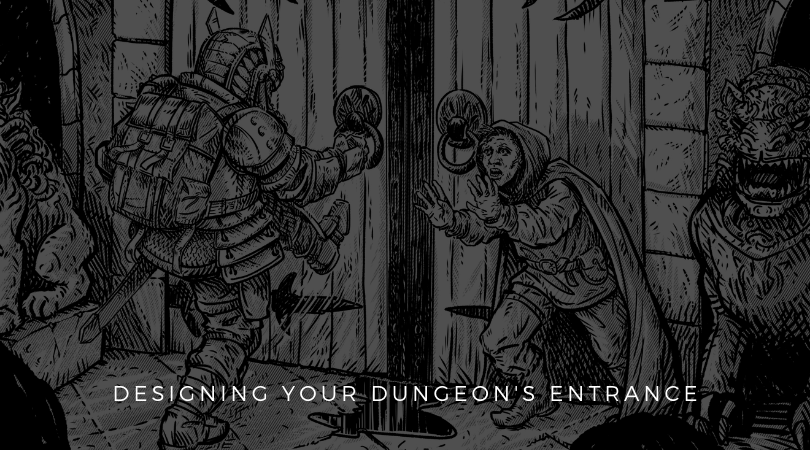Designing Your Dungeon's Entrance

Your Dungeon’s Entrance(s)
It’s a sad fact of life, but many commercially available dungeons only have one—or at the most two—entrances.
Depending on the dungeon’s size, this can be limiting, unimaginative or unrealistic (or all three). After all, when was the last time you lived or worked somewhere with only one way in or out? Most dungeons don’t have windows, but most buildings have more than one door. (At Raging Swan Press, we are posh; we’ve got three external doors but only one savage attack labrador).
In terms of play, only having one way in or out limits the party’s initial options and gives them no meaningful choice (or reward for clever play if they find a secret or hidden way in). When I ran Shadowed Keep on the Borderlands in my Borderland of Adventure campaign, for example, the adventurers found the stream tunnel leading from the watchtower to the dungeons below the main keep, which allowed them to surprise the Blood Moon goblins dwelling therein. This made them happy—they pulled one over on the goblins—and led to some fun, memorable play instead of them just plodding down the stairs into the goblins’ guardroom.
In terms of realism and verisimilitude, if there is only one way in or out, it will be one of the dungeon’s busiest and best-defended locales. This reduces the party’s tactical options and makes it easier for organised inhabitants to watch for (and defend against) intruders. (It also makes it easy for the dungeon denizens to be trapped in their home, something I’m sure they’d be keen to avoid).
It also massively restricts the dungeon’s denizens. In a dungeon with more than one faction of denizens, the one controlling the entrance controls the dungeon (or is constantly skirmishing with their rivals). After all, who wouldn’t want to control such a valuable piece of territory—even if only to deny it to one’s rivals or enemies?
Different Dungeon Entrances
Good news: not all dungeon entrances must be of the typical variety.
While there’s nothing wrong with more than one “normal” entrance—dungeons can have more than one obvious entrance—sometimes it’s fun to have at least one other unexpected or atypical entrance. Such entrances could include:
- A natural chimney or fissure in the rock.
- A flooded (or part-flooded) tunnel leading from a lake, pool or river into the dungeon.
- A tunnel created by the actions of a burrowing or tunnelling creature. Many creatures—ankhegs, purple worms and bulettes, for example—can create a tunnel intersecting the dungeon.
- A magic portal. A magic portal could provide an alternative way into a dungeon in campaign worlds with a high level of magic.
- A secret passage. A standard part of many dungeons, secret passages provide emergency escape routes, sally ports and more for dungeon dwellers. Typically, the exit of a secret passage is well hidden—perhaps in a dense grove of trees, an abandoned building or the like. They are challenging (and rewarding) to find.
Remember, not all the dungeon’s denizens will know of, and have access to, all the dungeon’s entrances. Some entrances could be heavily trapped and guarded or unknown to the residents—who will likely be surprised when intruders emerge from an unexpected direction.
Additionally, additional entrances might not be permanent or even original. For example, the water levels in part-flooded passageways will rise and fall while a tunnel dug by a purple worm might collapse.
The Final Word
Remember, these thoughts can also be applied to dungeon levels and sub-levels. When I designed Gloamhold’s general layout, I deliberately included multiple connections between the major levels, so the characters aren’t forced down one set path.
When designing all but the smallest dungeon, giving the characters meaningful choices (without killing them with choice) is what it’s all about!

Member discussion